Inbox and environment News: Issue 368
July 22 - 28, 2018: Issue 368
Bush Regeneration Near Creeks In The Narrabeen Lagoon Catchment
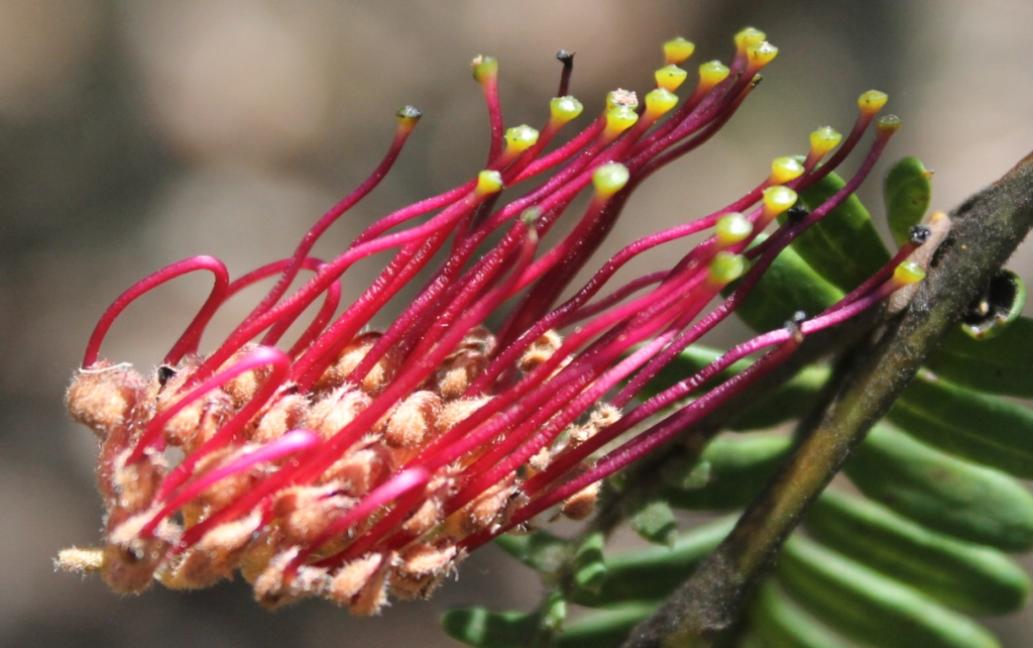
Grevillea caleyi, now critically endangered. Image taken in Bush at Ingleside/Terrey Hills verges - picture by A J Guesdon, 31.10.2014.

Bush Regeneration Near Creeks In The Narrabeen Lagoon Catchment
From Friends of Narrabeen Lagoon Catchment July 2018 NewsletterInformation supplied by Northern Beaches Council staff The Narrabeen Lagoon catchment has been a focal point for bushland restoration works for Northern beaches Council during the 2017/18 financial year. This is one of Council’s largest catchments and has the greatest extent of bushland reserves and biodiversity on the NorthernBeaches. Due to its environmental significance and importance to our community, Council has invested significant resources to continue restoration works within the various reserves and creek-lines of this catchment.
A summary of works that Council has undertaken include;
Upper Middle Creek contract: The main reserves that this contract is addressing include Jindabyne, Nandi, Wakehurst Park way, Rabbett, Corymbia, and Peppercorn Reserves. These reserves receive funding from Council and the RFS for Hazard Reduction works.
Jamieson Park contract: A diversity of Council activities has been undertaken including bush regeneration works, hazard reduction burning, and installation of nest boxes. There has been powerful owl and barking owl sightings within the reserve. This contract has also included bush regeneration works in Ambleside, South Creek, Lantana Ave and Windermere Reserves.
Four contracts have been underway within the Deep Creek region with two focusing on bush regeneration and two on bushfire hazard reduction activities. A bush regeneration contract has focused on the core areas of bushland and along riparian creek-line. Works included substantial weed control and revegetation of 200 tube stock plants focusing on areas of low biodiversity values.
Greater Sydney Local Land Services “Deep Creek Biodiversity Conservation Stage 2” grant funding program ends November 2018 working along the lower riparian Endangered Ecological Community of Swamp Sclerophyll Forests on Coastal Floodplains and SwampOak Woodland. This projects site is located near Wakehurst Parkway and Elanora Road.
Deep Creek Fire Mitigation grant funded works has been completed along the Elanora Road urban interface and the Elanora Road Bushcare site. Deep Creek Rural Fire Service Local Government Programme grant hazard reduction works at the urban interface along Wongala, Woorarra and Amaroo Roads has also been undertaken.
Bilarong Foreshore Reserve has included a bush regeneration contract and Green Army project. The Bilarong Foreshore Reserve Bush Regeneration contract has resulted in works along the track, entrances and within core areas. The Green Army project comprised a team of 8-10 staff that worked both the Bilarong Foreshore area near Deep Creek outlet as well as the area within Middle Creek on the western side of Wakehurst Parkway near the Narrabeen Sports Academy.
Kundibah Reserve, Elanora Heights bush regeneration contract included hazard reduction works and an area burn undertaken in August 2017. This was also undertaken for ecological purposes due to this site not having been burnt for over 20 years.
Kywong Reserve works included hazard reduction, revegetation works and bush regeneration.
Nareen Wetlands bush regeneration contract has been implemented to target both riparian and aquatic weeds. Council has successfully applied for Environmental Trust grant funding for this project to continue into the next financial year.
Ingleside Chase Reserve bush regeneration contract has a component of the project that focuses on Mullet Creek which flows through Warriewood Wetlands into Narrabeen Lagoon.
The final year of a 6 year Environmental Trust grant awarded to Pittwater Environmental Foundation to control weeds along the riparian areas of Mullet Creek from Ingleside down to the floodplain and waterfall area within the reserve has been completed. Works included substantial enrichment planting within the floodplain and Irrawong Reserve to replace thickets of Coral Trees and Ludwigia.
Warriewood Wetlands bush regeneration and water weed control project is underway restoring a section of Swamp Schlerophyll endangered ecological community and habitat for Grey Headed Flying Fox colony.
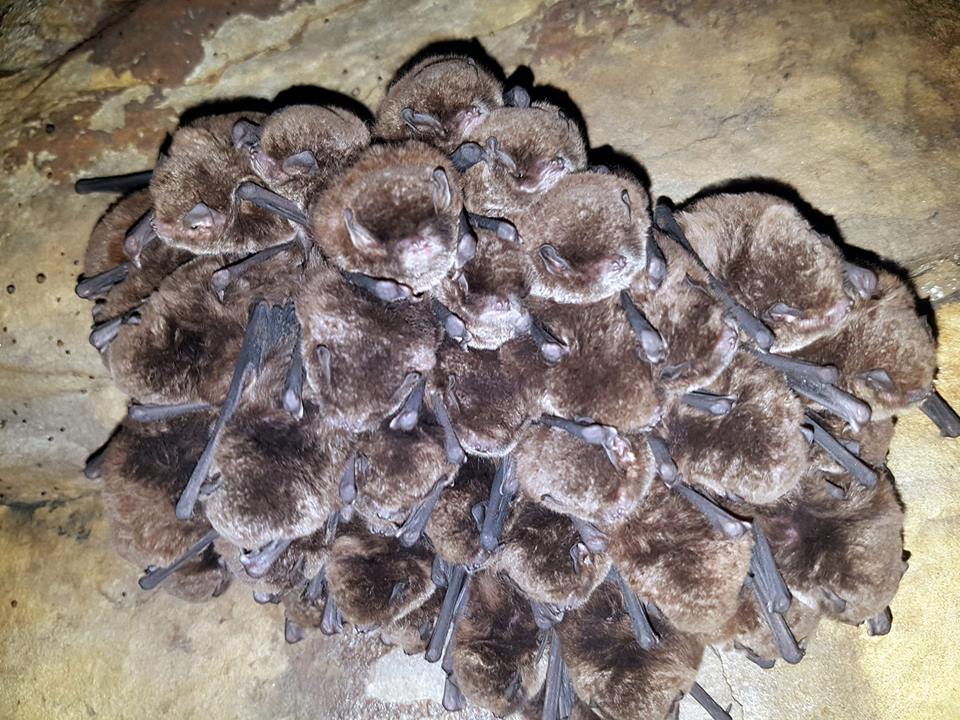
Some local little bentwings snuggling .... cute as buttons - there are 6 species in this cave, somewhere on the Northern beaches - Information and Photo by Sonja Elwood
Cromer and Beacon Hill contract: The main reserves that have undergone bush regeneration works during the financial year has included Red Hill, Oxford Falls Quarry, Golden Grove, Moonarie, Grover, Washington, Government, and Cromer Reserves.
Additionally bush regeneration contracts have been established as part of the Cromer to Curl Curl contract which includes Lilihina Reserve. A Duffys and Caleyi contract has seen bush regeneration works in JJ Hills Reserve.
The Oxford Creeks Bush Regeneration Project is underway utilising Crown Lands grant funding , and St Matthews Farm Bushregeneration project is undertaking targeted weed control with a Bushlink volunteer group working monthly.
Council’s Bush Regeneration Team have also been working along South Creek at Toronto Avenue.
Council has also been undertaking Fauna monitoring in the upper catchment of Ingleside Chase Reserve, monitoring the activities of Eastern Pygmy Possum. This project has been underway since 2012. The work includes monitoring 30 nest boxes installed in the heath area near Ingleside Chase Reserve and the Ingleside Elanora Heights area.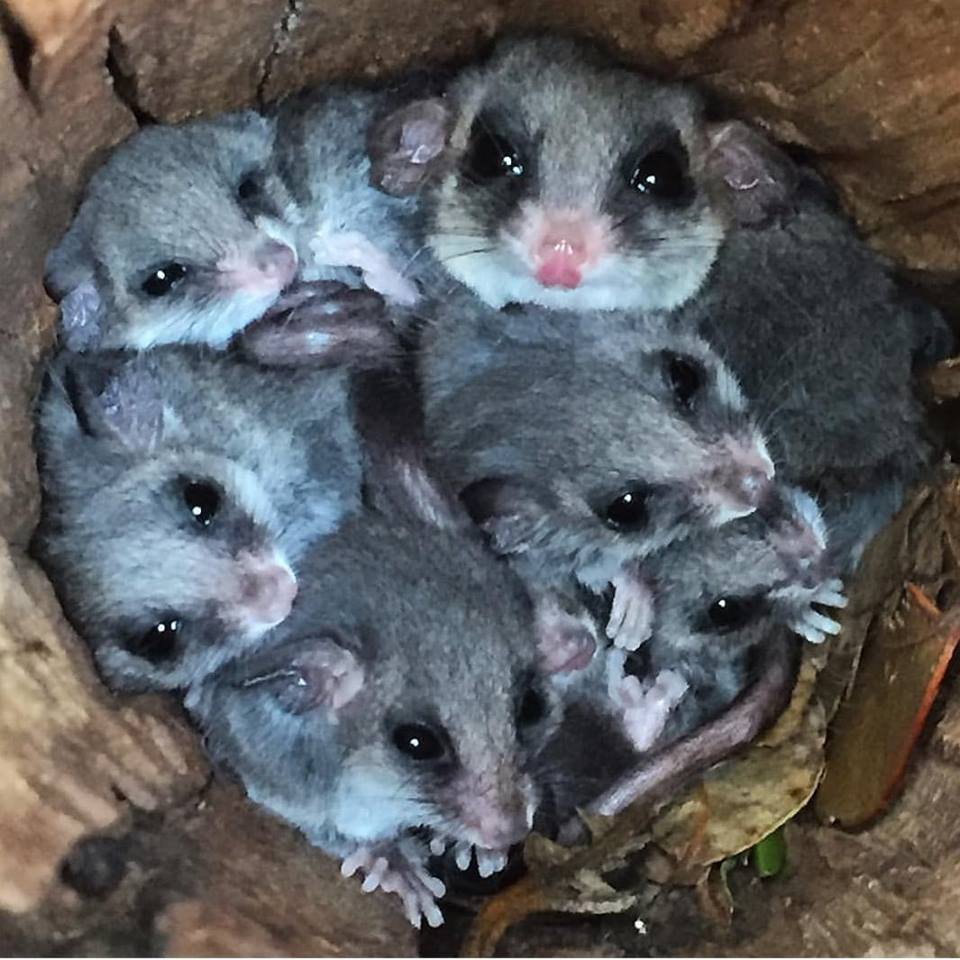 Eastern pygmy possum mummy and 6 babies in nestbox survey lines up around Ingleside installed by Sonja Elwood. Image courtesy Sonja Elwood. Photo credit: Emma Griffen - July 2018.
Eastern pygmy possum mummy and 6 babies in nestbox survey lines up around Ingleside installed by Sonja Elwood. Image courtesy Sonja Elwood. Photo credit: Emma Griffen - July 2018.


Reminder: Local Fauna Gets Thirsty In Winter Too
Please remember our local fauna will also get thirsty during Winter - especially during long dry periods with little or no rain and lots of wind. Leaving a dish of water outside will enable them to quench their thirst.
A shallow dish with twigs leading into and out of it is great for smaller lizards like slinks while this lovely, a Newport ring-tailed possum, will quite happily sup from a deeper dish. Photo courtesy Sonja Elwood.
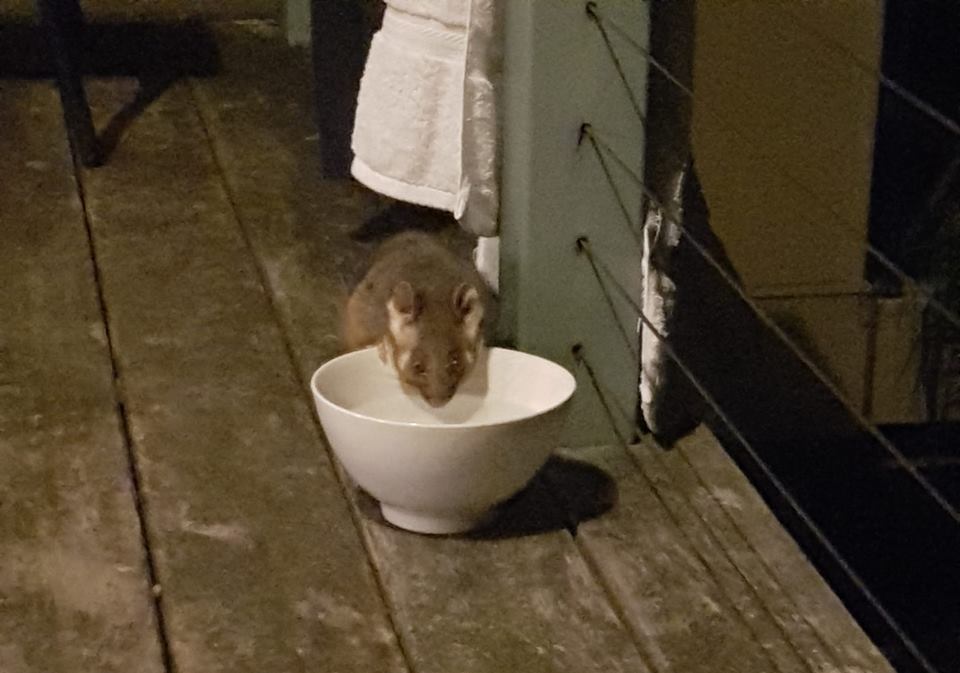

War On The Whales: Japan And Allies Take Aim To Destroy Global Moratorium On Commercial Whaling
July 16, 2018by Mark SimmondsHumane Society International: AustraliaAfter much build up in the Japanese media, the Government of Japan has now tabled their aggressive plan to overthrow the global moratorium on commercial whaling at the 67th Meeting of the International Whaling Commission, which will be held in Florianópolis, Brazil this coming September. A lot of what Japan says to its national media in the run-up to this important meeting of nations is playing to their domestic audience; for example to reassure politicians with whaling constituencies that their government is taking a hard line. Now we have seen their formal proposal (published on the IWC website on July 12th), we can confirm that Japan is significantly upping the ante on its ambitions to open up full scale commercial whaling. So, let’s put these proposals in context and consider how they may play out.
In 1982, member nations of the IWC, the international body that oversees whale conservation and manages whaling, joined together to put into place a global ban on commercial whaling. Despite opposition from whaling nations, they achieved the necessary three-quarter majority required by the IWC and zero quotas were set for all the Great Whale species. It is these zeroed quotas for all the baleen whale species and the sperm whale that constitute the ‘moratorium’.
Under the International Convention for the Regulation of Whaling, the treaty which establishes the IWC and provides its rules, countries are legally allowed to take out ‘objections’ to decisions made by ¾ majority votes at the IWC. The effect of an objection is that a country is not bound by the decision. Some whaling nations took out objections to the moratorium, including Japan, although it later rescinded it. Instead, Japan chose to continue to kill whales abusing a clause in the Convention which allows for a take of whales for scientific purposes and, sadly, permits countries to set their own quotas for this purpose. In tabling their latest proposals, it seems Japan would like to ditch the scientific pretence and openly hunt whales for commercial purposes.
The moratorium decision, which came into force in 1986, emerged directly from the abject failure of all previous attempts to manage whaling; nothing that went before had proven to be sustainable and whale populations crashed. It was (and is) simply too difficult to manage exploitation of such biologically vulnerable species with such high economic value out on the high seas, as more recent evidence of “cheating” (mainly under-reporting of whales killed) by whaling fleets in the 20th century has further illustrated. Additionally, in the years leading up to the IWC moratorium decision, there was a growing public recognition around the world that whaling was an unnecessary and cruel hunt of large sentient mammals.
Wind the clock forward some 30 years (more or less the lifespan of only one generation of whales) and there are signs that, for some populations, the drive for protection has been working. This is not true for all, of course, and some populations may never recover. Unfortunately, the notion of recovery gives new political ammunition to those who continue to advocate for commercially hunting whales. So, it is not surprising that Japan’s call to resume commercial whaling is linked to this broad claim of recovery and presented as part of the strategy that Japan will bring to the meeting in Brazil. Australians can fully anticipate Japan wanting to add recovering humpback whales to their Antarctic hunts; the much-watched animals which migrate up from the Southern Ocean along the Australian east and west coasts each winter. However, some degree of recovery alone cannot be seen as a sensible trigger for the resumption of whaling.
Japan’s strategy can be distilled into two main steps. First, Japan proposes to make a change to the IWC’s voting practices, so that votes on quotas, which presently require a 75 percent majority vote, can instead be passed by a simple majority (50 percent of those nations voting plus 1). Second, it proposes a mechanism that will allow commercial whaling quotas to be voted on and passed for whale ‘stocks/species’ by the simple majority, thereby destroying the moratorium. Step one should be ruled out from the outset as, it is written into the Convention text itself that decisions on quotas are to be determined by a ¾ majority of votes. The Convention text cannot be over-ruled and Japan is well aware of this and its proposal includes a ‘diplomatic conference’ of nations to try to take such revision forward.
Whilst Japan’s strategy seems unlikely to succeed as stated, it could still bring considerable confusion and consternation into play at the meeting. As a threat it is not without power.
One press article, notes that Japanese government officials believe “this year is a unique opportunity for Japan”. It may be that they see an opportunity because this is a meeting where Aboriginal Subsistence Whaling quotas expire and must be renewed. ASW is the one form of whaling that the IWC still manages and is intended to recognise the ongoing nutritional, subsistence and cultural needs of certain indigenous peoples, such as the Alaskan natives of the USA. These quotas come up for approval every few years and, when they do, the IWC’s meetings become especially complex and fractious.
Perhaps Japan and its allies see opportunities for horse-trading at the Brazil meeting, as has been tried before. For example, if the United States wants an ASW quota for its native people, it might need to give Japan support for its proposals, noting also that Japan tries to argue that the situation of some of its coastal whaling communities should be seen as analogous to that of indigenous people.
The distinction between commercial and aboriginal hunts has become increasingly blurred, presenting sensitive problems where the rights of indigenous peoples bump into commercial whaling interests. Care needs to be taken to maintain these as distinct categories.
One thing that the proponents of a resumption of commercial whaling seem to have conveniently forgotten is the absence of any agreed-upon management regime for the practice. So not only would they be saying to the rest of the world that it is fine to resume whaling as a money-making activity again, but also that it does not matter that we have made no progress in how to manage the hunting of whale populations. That is flatly wrong. Aside from the moral concerns of killing these highly sentient creatures, if history is any indication, any attempted resumption of commercial whaling clearly requires comprehensive and independent monitoring. Soon after the moratorium was agreed, IWC member nations did have meetings (mainly behind closed doors) to try to reach an agreement over what oversight would look like, but this process failed in 2006. One of the sticking points concerned who would pay for key elements like independent inspectors and DNA-registers; the whaling nations did not wish to bear these costs.
Japan’s recent statements and proposals can be seen as a battle cry, analogous to the haka famously used by the New Zealand rugby team at the start of an international game to instill fear in its opponents. In the IWC context, Japan wants to cause concern and perhaps confusion, and the opposing team in the IWC context also certainly needs to have all its players on the field, engaged and unintimidated.
When it comes to the defence of the global moratorium on commercial whaling, this is something of a moral imperative this year – the overthrow of the moratorium would lead to a return of widespread, cruel and un-regulated whaling. There is a significant threat that Japan might have more pro-whaling nations in its team when the party nations arrive at Florianópolis. Many lawyers will certainly be pondering what exactly a pro-whaling simple majority might achieve, but if they do have the numbers one thing is clear—the news for the whales will be very bad.
Please sign our letter to Federal Environment Minister Josh Frydenberg asking him to remain steadfast in opposition to commercial whaling. Letter available HERE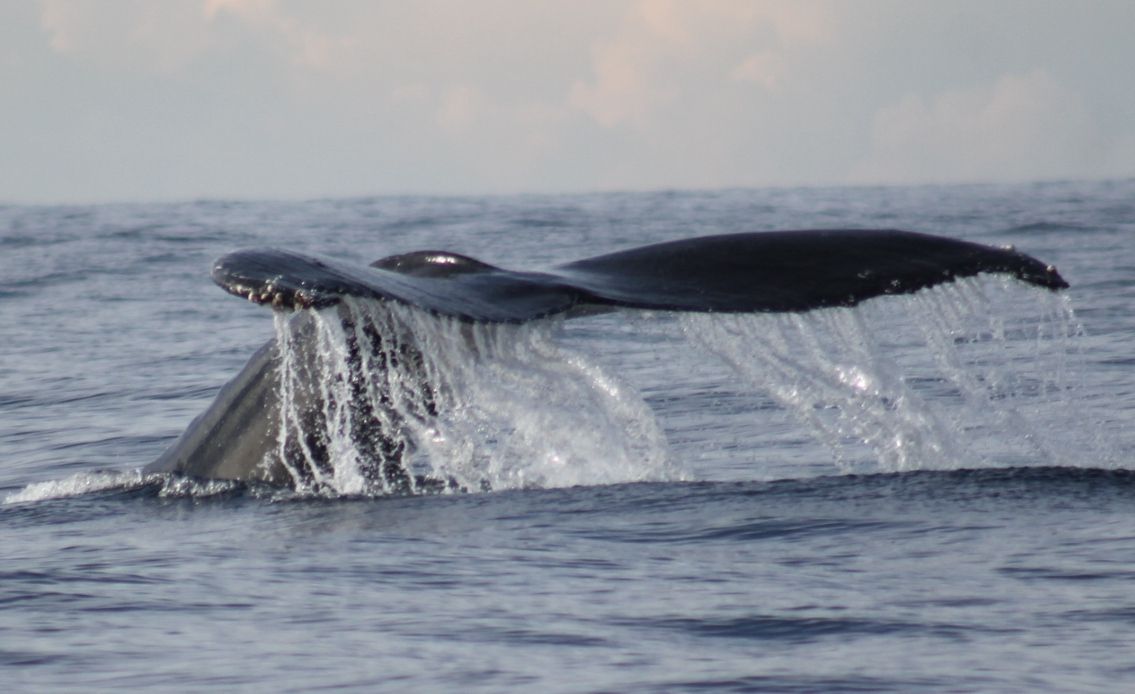 Visit: ICJ ruling will help Japan resume whaling in name of ‘research’: official - The Japan Times, June 10th, 2014
Visit: ICJ ruling will help Japan resume whaling in name of ‘research’: official - The Japan Times, June 10th, 2014
Extract;' An embarrassing court ruling that halted Japan’s Antarctic whaling will actually help Tokyo take whales in the name of science, a top whaling official said just a day after the prime minister vowed to press for commercial whaling.....“The assumption of the court is that Japan could . . . look at a new research plan,” Morishita told a news conference in Tokyo.
“And that it’s okay for Japan to propose a new plan which involves killing whales as long as it takes account of the reasoning and conclusions set by the ICJ at this time.” ...'

Provisional Agendas And Other Documents Circulated In Advance Of IWC67
July 12, 2018This Circular informs IWC Contracting Members, Observers and members of the Scientific Committee that the Annotated Agendas for the Plenary and Sub-committee meetings at IWC67 are now available through the website at https://iwc.int/iwc67. In addition, the Secretariat has posted all the proposed Schedule Amendments and Resolutions received in time for the 12 July deadline (Rules of Procedure Section J).
The Provisional Agendas are available for:- IWC67 Plenary (IWC/67/GEN/01)- Finance and Administration Committee (IWC/67/FA/GEN/01)- Conservation Committee (IWC/67/CC/GEN/01)- Aboriginal Subsistence Whaling Sub-committee (IWC/67/ASW/GEN/01)- Infractions Sub-committee (IWC/67/INF/GEN/01)- Budgetary Sub-committee (IWC/67/BSC/GEN/01)- Working Group on Whale Killing Methods and Welfare Issues (IWC/67/WKMWI/GEN/01)
The following proposals have been received:Schedule Amendments:1) Proposed Schedule Amendment on Aboriginal Subsistence Whaling. Submitted by the Kingdom of Denmark, Russian Federation, St. Vincent the Grenadines and the United States of America. (IWC/67/01)[Note: in accordance with the pilot use of a timetable for ASW quota requests, endorsed at IWC661 and the Commission Rules of Procedure, this was provided by 12 June 2018 (90 days before the Commission plenary meeting)].
2) Proposed Schedule Amendment to Create a South Atlantic Whale Sanctuary, submitted by Brazil. This document is supported by IWC/67/10 which describes the objectives and management plan for the proposed Sanctuary (IWC/67/09)
3) Proposed Schedule Amendment for setting catch limits for certain whale species, submitted by Japan. This Schedule Amendment is part of a package of documents on The Way Forward for the IWC – an IWC Reform Proposal (IWC/67/08)
1 Report of the 66th meeting of the International Whaling Commission pp. 16-18
Chair: Dr Joji Morishita (Japan)Vice-Chair: Mr Andrej Bibic (Slovenia)Executive Secretary: Dr Rebecca Lent
Resolutions:1) Draft Resolution on Anthropogenic Underwater Noise, submitted by Austria on behalf of EU Member States (IWC/67/05)
2) Draft Resolution on Food Security, submitted by Antigua and Barbuda, Cambodia, Ghana and Guinea (IWC/67/07)
3) Draft Resolution on Way Forward of the IWC, submitted by Japan. This Resolution is part of a package of documents (see Schedule Amendments, above) (IWC/67/08)
4) Draft Resolution on Ghost Gear Entanglement Among Cetaceans, submitted by Brazil (IWC/67/11)
5) Draft Resolution on the 2030 Agenda, submitted by Brazil (IWC/67/12)
6) Draft Resolution proposing ‘The Florianopolis Declaration on the Role of the International Whaling Commission in the Conservation and Management of Whales in the 21st Century’, submitted by Brazil (IWC/67/13)
7) Draft Resolution on the Response to the Independent Review of the IWC, submitted by Argentina, Australia and Austria on behalf of the EU Member States (IWC/67/14)
8) Draft Resolution on the Allocation of Aboriginal Whaling Quotas for Greenland, submitted by the Dominican Republic (IWC/67/15)
Proposals to amend the Commission’s Rules of Procedure or Financial Regulations have also been submitted for the attention of the Finance and Administration Committee:- Proposed amendments to the Scientific Committee Rules of Procedure and Scientific Committee Handbook (IWC/67/FA/02 and 03)- Proposed amendment relevant to Conservation Committee meetings (IWC/67/FA/01)- Proposed amendment to the Voluntary Conservation Fund financial regulations (IWC/67/FA/04)- Proposed amendments to the Rules of Procedure relevant to the package of documents on The Way Forward – a Proposal for IWC Reform (IWC/67/08)
Finance and AdministrationThe following Plenary documents are available:Financial Statements for the 12 months to 31 December 2016 (IWC/67/02)Financial Statements for the 12 months to 31 December 2017 (IWC/67/03)Commentary on the 2016 and 2017 Commission Accounts (IWC/67/04)IWC Budget Strategy – 2019/20 (IWC/67/06)
NotesIn addition, the Secretariat has posted the draft report from the Standing Working Group on Special Permits (IWC/67/16). Note that comments will be accepted on this document over the next 30 days. Kindly send your comments to the IWC Secretariat (secretariat@iwc.int) prior to 12 August 2018.
In accordance with Commission Rule of Procedure J4, Contracting Members are requested to send written comments relating on the Proposed Schedule Amendment on Aboriginal Subsistence Whaling (proposed ASW catch/strike limit requests) to secretariat@iwc.int by 11 August 2018 (at least 30 days before the first day of Commission plenary).
The Turnbull Coalition Government Remains Steadfastly Opposed To All Forms Of Commercial And So-Called 'Scientific' Whaling
12 July 2018: Media release - The Hon. Josh Frydenberg MP, Minister for the Environment and Energy
We strongly support the global moratorium on commercial whaling and will continue working through the International Whaling Commission to bring about a permanent end to this whaling.
The Government is aware of recent media reports that Japan may seek to introduce a proposal aimed at lifting the global moratorium on commercial whaling at the next International Whaling Commission meeting in September 2018. The deadline for countries introducing any such proposal is 12 July 2018.
Australia’s position on whaling remains clear – we will strongly oppose any proposals that seek to overturn the moratorium or weaken the rules for making decisions on commercial whaling.
Our efforts on this issue have been consistent and strong. We have provided funding to support the International Whaling Commission’s Southern Ocean Research Partnership demonstrating that whales do not need to be killed in order to study them. We welcomed the International Court of Justice’s 2014 finding that Japan’s Southern Ocean whaling program ‘JARPA-II’ was not for purposes of scientific research. We are leading efforts in the International Whaling Commission to ensure Japan’s whaling programs in the North Pacific and Southern Ocean are subjected to greater scrutiny. This includes successfully passing a resolution at the Commission meeting in 2016 establishing a group, chaired by Australia, to undertake this work. Late last year, we led a joint statement with 39 other countries in which we expressed disappointment with Japan’s decision to continue its Southern Ocean whaling program and urged them to cease whaling in future seasons.
The Australian Government will continue to advocate strongly and consistently for the cessation of commercial and so-called ‘scientific’ whaling.
Japanese Whaling
Japanese whaling, in terms of active hunting of these large mammals, is estimated by the Japan Whaling Association to have begun around the 12th century. However, Japanese whaling on an industrial scale began around the 1890s when Japan began to participate in the modern whaling industry, at that time an industry in which many countries participated. Japanese whaling activities have historically extended far outside Japanese territorial waters, even into whale sanctuaries protected by other countries.
During the 20th century, Japan was heavily involved in commercial whaling. This continued until the International Whaling Commission (IWC) moratorium on commercial whaling went into effect in 1986. Japan continued to hunt whales using the scientific research provision in the agreement, and Japanese whaling is currently conducted by the Institute of Cetacean Research. This was allowed under IWC rules, although most IWC members oppose it. However, in March 2014 the UN's International Court of Justice ruled that the Japanese whaling program, called "JARPA II", in the Southern Ocean, including inside the Australian Whale Sanctuary, was not in accordance with the International Convention for the Regulation of Whaling, and was not for scientific purposes, as it had claimed. They ordered Japan to cease operations. Despite the court order, Prime Minister Abe quickly called for the resumption of whaling operations. In December 2015, Japan went ahead with their whaling program, renamed "NEWREP-A".
On January 15, 2017, a helicopter in the Australian Whale Sanctuary photographed the Japanese whaling vessel Nisshin Maru with a freshly-killed minke whale on its deck. Crew members quickly covered the carcass after seeing the helicopter. Their objective is to hunt 3,000 Antarctic minke whales over 10 years, starting with 330 whales during the 2015–16 season. Antarctic minke whale have experienced an apparent decline in population, though the International Union for Conservation of Nature (IUCN) indicates that it lacks sufficient data to confer a "threatened" designation on the species of minke whale.
These hunts are a source of conflict between pro- and anti-whaling countries and organisations. The UN's International Court of Justice, in addition to other countries, scientists, and environmental organisations consider the Japanese research program to be unnecessary and lacking scientific merit, and describe it as a thinly disguised commercial whaling operation. Japan maintains that annual whaling is sustainable and necessary for scientific study and management of whale stocks, though the Antarctic minke whale populations have declined since the beginning of the JARPA program and those whales killed have shown increasing signs of stress. Japan, echoing Norway's arguments on its own whaling activities, also argues it is entitled to continue whaling because of whaling's place in its cultural heritage.
The whale meat from these hunts is sold in shops and restaurants, and is showcased at an annual food festival that, in some cases, features the butchering of a whale for onlookers.
A poll in 2014 found that few Japanese people today eat whale meat regularly, and tourists are often reluctant to try it on ethical grounds.
Wikipedia contributors. (2018, July 3). Whaling in Japan. In Wikipedia, The Free Encyclopedia. Retrieved fromhttps://en.wikipedia.org/w/index.php?title=Whaling_in_Japan&oldid=848708189
Japan Kills 122 Pregnant Whales In Southern Ocean
May 29, 2018 Humane Society International Australia (Issue 362)Humane Society International has today expressed its outrage that 122 pregnant female whales were killed this year in the Southern Ocean as part of Japan’s so-called ‘scientific’ whaling program ‘NEWREP-A’. This information was contained in newly published meeting papers from the International Whaling Commission (IWC) Scientific Committee meeting held in Slovenia in May.
The results show that of the 333 Antarctic minke whales killed this year, 181 were females. 122 or 67% of these females were pregnant and 53 or 29% were immature animals.
“The killing of 122 pregnant whales is a shocking statistic and sad indictment on the cruelty of Japan’s whale hunt. It is further demonstration, if needed, of the truly gruesome and unnecessary nature of whaling operations, especially when non-lethal surveys have been shown to be sufficient for scientific needs,” said Alexia Wellbelove, Senior Program Manager at Humane Society International.
Despite condemnation by the international community and the International Court of Justice, the highest court on the planet, which ruled in 2014 that Japan’s ‘JARPA II’ Antarctic whaling program was illegal and must stop, Japan re-badged its whaling program and sent its whaling fleet to the Southern Ocean for its annual whale hunt in 2015. In a blatant attempt to protect itself from further legal challenge, Japan has withdrawn its recognition of the International Court of Justice as an arbiter of disputes over whales.
“Whales are already facing substantial threats including bycatch in fisheries and marine pollution. Significant conservation efforts are underway worldwide to address these issues, so the least Japan could do is put away the harpoons.
“The continued killing of any whales is abhorrent to modern society, but these new figures make it even more shocking. We look forward to Australia and other pro-conservation countries sending the strongest possible message to Japan that it should stop its lethal whaling programs,” concluded Ms Wellbelove.
The next meeting of the International Whaling Commission is in September in Brazil.
Japan's ultimate goal is the resumption of commercial whaling. The government insists that most whale species are not endangered and that eating whale is part of its culture, even though most Japanese people no longer eat it.
The Australian chapter of Humane Society International expressed outrage over the new figures and called on the Australian government to intervene.
Conservation organization Sea Shepherd has long opposed Japanese whaling in the Southern Ocean and has sent ships since 2005 to intercept the hunts. The group, however, did not send ships this year. Founder Captain Paul Watson told Australian Broadcasting Corp in August that Japan is "using military technology. They have real-time satellite coverage of where we are. We cannot close in on them.""It's a waste of time and money to go down there and not be able to achieve anything," he added.
In November, Sea Shepherd released a grisly and unsettling video of a Japanese whaling fleet hunting in the Antarctic Ocean in an Australian whale sanctuary. The Australian government obtained footage of the hunt in 2008 but suppressed its release over diplomatic concerns with Japan. Sea Shepherd was only able to publicly release the film after winning a five-year Freedom of Information battle that began in 2012.
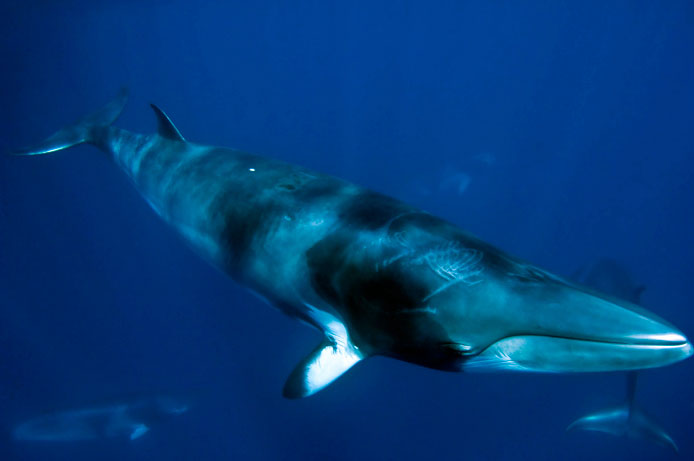
Minke whale
In November, Sea Shepherd released a grisly and unsettling video of a Japanese whaling fleet hunting in the Antarctic Ocean in an Australian whale sanctuary. The Australian government obtained footage of the hunt in 2008 but suppressed its release over diplomatic concerns with Japan. Sea Shepherd was only able to publicly release the film after winning a five-year Freedom of Information battle that began in 2012.

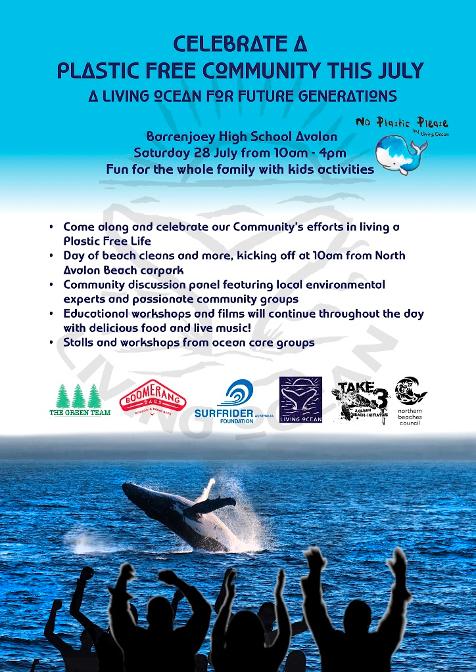
Pittwater Reserves
Annie Wyat Reserve - A W PictorialBarrenjoey Headland: Spring flowers Barrenjoey Headland after fire
PNHA Newsletter 76
Read about wild life in the 'Burbs - How to identify local owl calls, the Wing Tag project and PNHA's latest campaign news.
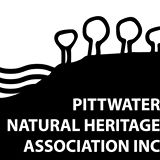

Friends Of Narrabeen Lagoon Catchment August 2018 Forum
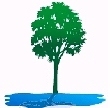 Next forum: Creeks in the Catchment7pm Monday August 27, 2018Coastal Environment Centre, Pelican Path,Lake Park Road, Narrabeen
Next forum: Creeks in the Catchment7pm Monday August 27, 2018Coastal Environment Centre, Pelican Path,Lake Park Road, Narrabeen
Presenters: Staff members from Northern Beaches Council will outline the works needed to control erosion and protect against flooding. Plus information about the bush regeneration projects in near creeks in the catchment.
Are you concerned about any of these issues?* Water quality in creeks leading to Narrabeen Lagoon* Health of aquatic wildlife* Creek flooding* Blockages in creeks* Erosion of creek banks* Rubbish in creeks* Weeds in riparian zones?Bring your concerns and questions to the forum on August 27 and find out more about creek care from Council staff.
Entry is free but we ask for a donation to cover expenses.Make sure you get a ticket preferably by emailing Judith Bennett email@narrabeenlagoon.org.au
 Next forum: Creeks in the Catchment
Next forum: Creeks in the CatchmentSydney Science Festival: Tiny Ocean Plants With Eva Fernandez
by Northern Beaches Council Library ServiceFREEWed. 8 August 2018: 6:30 pm – 7:30 pmManly LibraryMarket Place, ManlyThrough scientific trips to the Great Barrier Reef and Antarctica, we discover how the tiny plants that live in the ocean have an important effect on our climate.
Eva Fernandez grew up in Spain, where she completed her bachelor and master’s degrees in chemistry. Her research has lead her from the Azores islands to Malta where she used barnacles to test the effect on the environment of new eco-friendly boat paints. Her research finally landed Eva in Australia where she joined the Climate Change Cluster (C3) within the University of Technology, Sydney to pursue her PhD.
This free event is part of Inspiring Australia’s Talking Science library speaker series.
Don’t want to miss a thing? Subscribe here to the library events mailing list to find out about upcoming events.Enquiries: 9976 1720
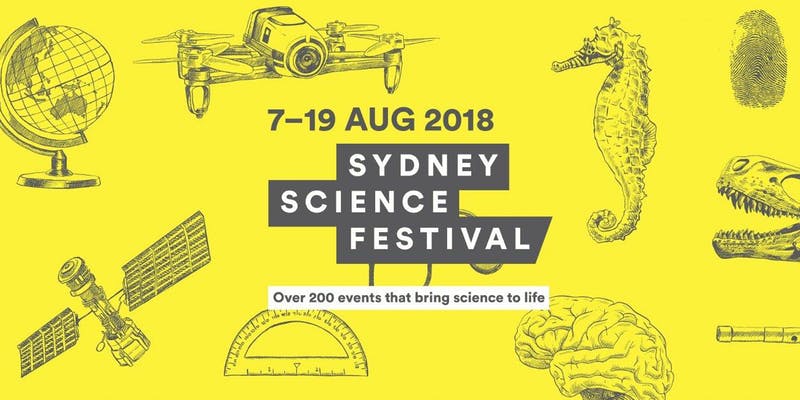

Marine Aquaculture Strategy
The Department of Primary Industries is seeking feedback on the draft NSW Marine Waters Sustainable Aquaculture Strategy.
What's this about?The NSW Marine Waters Sustainable Aquaculture Strategy promotes best practice for marine aquaculture. It provides a framework for the NSW Government to ensure the development of aquaculture does not jeopardise its ecological sustainability and social licence.
Marine aquaculture is the farming of marine animals and plants, especially fish, shellfish and seaweed, in natural or controlled marine or estuarine environments.
The strategy:- provides a regulatory and industry best practice framework for NSW marine waters aquaculture to develop sustainably
- provides a platform for the government to identify suitable marine aquaculture areas
- defines the development approval and assessment processes
- provides guidance to industry and consent authorities to prepare and assess applications for aquaculture development
- provides the community and stakeholders with relevant advice to inform them about sustainable marine waters aquaculture
- avoids ad hoc aquaculture development in NSW.
The strategy area applies to NSW marine waters, to three nautical miles where it meets Commonwealth waters. It does not include estuarine aquaculture.
Have your say
RegionsCentral CoastCentral West & OranaFar WestHunterIllawarra-ShoalhavenNew England & North WestNorth CoastRiverina MurraySouth East & TablelandsSydneyWestern Sydney
- provides a regulatory and industry best practice framework for NSW marine waters aquaculture to develop sustainably
- provides a platform for the government to identify suitable marine aquaculture areas
- defines the development approval and assessment processes
- provides guidance to industry and consent authorities to prepare and assess applications for aquaculture development
- provides the community and stakeholders with relevant advice to inform them about sustainable marine waters aquaculture
- avoids ad hoc aquaculture development in NSW.
9 Million More Ways To Save Threatened Species
Tuesday June 26, 2018: NSW Minister for the Environment, The Hon. Gabrielle Upton
The NSW Government has put $9 million on the table to deliver more local projects to save threatened species.
"This is the first time this scale of funding has been available to the community from the Saving our Species (SOS) program," Environment Minister Gabrielle Upton said.
"The new grants program is designed to maximise the number of species that can be secured in the wild under the NSW Government's Saving our Species initiative.
"Saving our Species is investing $100 million over five years to secure populations of threatened species in the wild. Projects are currently in place for some 350 species. Applications open today and I encourage groups to apply for funding for local projects," Ms Upton said.
"By creating long-term partnerships between the NSW Government, community groups and other organisations, more threatened plants and animals can be managed and supported. All applicants are strongly encouraged to develop and deliver projects with other collaborating partners."
Minister Upton announced the grant funding at a function for the Foundation for National Parks and Wildlife held in Manly today.
"This grant is a tremendous opportunity for community groups and organisations to identify a threatened or iconic species and seek shared funding for a project," said the Member for Manly, James Griffin.
"Here in Manly, native animals such as the Long Nosed Potoroo on North Head have benefitted from Save our Species funded programs.
"It's a win for the community, a win for the environment and, most importantly, it's a win for animals facing the threat of extinction," he said.
Under the program individual grants of up to $350,000 are available for projects that will run for 7 years and will require a contribution from the successful organisation and project partners.
Applications are open from 26 June – 13 August 2018.
More information and forms on the: Saving Our Species Contestable Grants Program 2018 webpage
Tuesday June 26, 2018: NSW Minister for the Environment, The Hon. Gabrielle Upton
The NSW Government has put $9 million on the table to deliver more local projects to save threatened species.
"This is the first time this scale of funding has been available to the community from the Saving our Species (SOS) program," Environment Minister Gabrielle Upton said.
"The new grants program is designed to maximise the number of species that can be secured in the wild under the NSW Government's Saving our Species initiative.
"Saving our Species is investing $100 million over five years to secure populations of threatened species in the wild. Projects are currently in place for some 350 species. Applications open today and I encourage groups to apply for funding for local projects," Ms Upton said.
"By creating long-term partnerships between the NSW Government, community groups and other organisations, more threatened plants and animals can be managed and supported. All applicants are strongly encouraged to develop and deliver projects with other collaborating partners."
Minister Upton announced the grant funding at a function for the Foundation for National Parks and Wildlife held in Manly today.
"This grant is a tremendous opportunity for community groups and organisations to identify a threatened or iconic species and seek shared funding for a project," said the Member for Manly, James Griffin.
"Here in Manly, native animals such as the Long Nosed Potoroo on North Head have benefitted from Save our Species funded programs.
"It's a win for the community, a win for the environment and, most importantly, it's a win for animals facing the threat of extinction," he said.
Under the program individual grants of up to $350,000 are available for projects that will run for 7 years and will require a contribution from the successful organisation and project partners.
Applications are open from 26 June – 13 August 2018.
More information and forms on the: Saving Our Species Contestable Grants Program 2018 webpage
Australia Has A New Venomous Snake - And It May Already Be Threatened
July 16, 2018: University of QueenslandThe ink has not yet dried on a scientific paper describing a new species of snake, yet the reptile may already be in danger of extinction due to mining.
A team of biologists led by The University of Queensland's Associate Professor Bryan Fry discovered a new species of bandy-bandy snake at Weipa on the west coast of the Cape York Peninsula.
Professor Fry said the chance discovery occurred when the team was undertaking sea snake research.
"Bandy-bandies are burrowing snakes, so Freek Vonk from the Naturalis Museum and I were surprised when we found it on a concrete block by the sea, after coming in from a night of sea snake spotting," Professor Fry said.
"We later discovered that the snake had slithered over from a pile of bauxite rubble waiting to be loaded onto a ship.
"On examination by my student Chantelle Durez, the bandy-bandy turned out to be a new species, visually and genetically distinct from those found on the Australian East coast and parts of the interior."
The team found another specimen in its natural habitat near Weipa, and another killed by a car close to the mine.
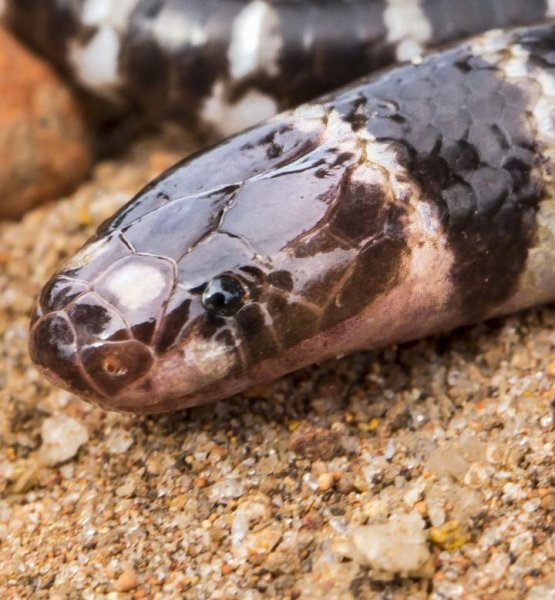
This is the newly discovered bandy bandy snake. Credit: Bryan Fry
Two more specimens were found in museum collections and a photo was found of another, contributing to a tally of six observations in the same small area.
Professor Fry said he feared the new species could be in trouble.
"Bauxite mining is a major economic activity in the region, and it may be reshaping the environment to the detriment of native plants and animals," Professor Fry said.
"The importance of such discoveries goes beyond simply documenting what is out there, as venoms are rich sources of compounds that can be used to develop new medications.
"Every species is precious and we need to protect them all, since we can't predict where the next wonder-drug will come from.
"The discovery of this enigmatic little snake is symptomatic of the much more fundamental problem of how little we know about our biodiversity and how much may be lost before we even discover it."
Chantelle M. Derez, Kevin Arbuckle, Zhiqiang Ruan, Bing Xie, Yu Huang, Lauren Dibben, Qiong Shi, Freek J. Vonk, Bryan G. Fry. A new species of bandy-bandy (Vermicella: Serpentes: Elapidae) from the Weipa region, Cape York, Australia. Zootaxa, 2018; 4446 (1): 1 DOI: 10.11646/zootaxa.4446.1.1

AMDI App Launched!!
Tangaroa Blue Foundation is proud to announce the launch of theAustralian Marine Debris Initiative (AMDI) App to provide a platform for citizen scientists and AMDI partners to contribute data from their clean-up activities to the AMDI Database. This data enables the tracking of marine debris and litter items back to the source, so that source reduction plans can be implemented to stop the flow of rubbish into our oceans.
The app was launched on Tuesday 19th of June at Black Head Surf Life Saving Club in NSW, and was supported by three short training events for interested volunteers at Speers Point, Stockton and Forster from June 17-20.
The development of the AMDI app has been supported by the Great Barrier Reef Marine Park Authority's Local Marine Advisory Committees, Hunter Local Land Services, Northern Agricultural Catchments Council, Queensland Water & Land Carers, Southern Region Waste Group, Sunshine Coast Council, Unitywater and Think Spatial..
Search "Australian Marine Debris Initiative" on the Google Play Storeto download for Android devices - available now. The Apple Store version will be available soon!
Tangaroa Blue is a not-for-profit organisation dedicated to the removal and prevention of marine debris.
Heidi Taylor from Tangaroa Blue says the app will make real-time monitoring of pollution easier for the dedicated volunteers working to remove rubbish from our coasts.
“The app is going to make our data collection so much easier as volunteers can automatically record GPS data, add photos and even scan the barcode on rubbish so we can track it back to its source,” says Ms Taylor.
“The AMDI Database helps identify the types and amounts of marine debris impacting specific sites.
“We work with community, government and industry groups to identify sources to find practical solutions that stops marine debris entering our waterways.”
“Hunter Local Land Services is one of the AMDI partners and acknowledges the many volunteers along our coastline, who work tirelessly to improve habitats for native species and make our beaches better for everyone,” says Community Engagement Officer Reegan Walker.
“We are encouraging community groups, industry bodies and just the wider marine users to come along to these training sessions, to ensure the app is used to its full potential.”
Tangaroa Blue is urging anyone currently finding rubbish from damaged shipping containers to take photos and lodge the barcodes with the AMDI so the rubbish can be tracked as it moves along the coastline.
According to CSIRO research most of the rubbish that washes up on Australian beaches is plastic waste, and Ms Taylor said in some remote areas, very little is from Australia.
"Up in Cape York more than 90 per cent of the debris is actually coming from overseas," she said.
Australian Marine Debris Initiative Information The Australian Marine Debris Initiative is a network of communities, schools, industries, government agencies and individuals focused on reducing the amount of marine debris washing into our oceans.
On every beach around Australia you will find some form of marine debris, from litter left by visitors to international debris, to ghost nets or rubbish washed from far inland through stormwater drains.
The statistics are horrifying with the United Nationals' Regional Seas Program estimating more than 18,000 pieces of plastic in each square kilometre of ocean; and other research estimating more than 8 million tonnes of debris entering the world's oceans each year. The majority of this marine debris is plastic, which due to its chemical makeup is a long lasting material. Plastics, once released into the environment, never biodegrade, instead photodegrading breaking into smaller and smaller pieces of the original item, forever remaining in the environment.
The Australian Marine Debris Initiative is a way that everyone can become involved in both the removal of marine debris and finding solutions to stop the flow of rubbish into our oceans.The Australian Marine Debris Initiative includes:- Marine debris and beach clean up events;
- On-going marine debris monitoring programs;
- Presentations on the marine debris issue;
- Workshops on mitigation strategies on marine debris;
- The Australian Marine Debris Database;
- Educational resources and clean up materials;
- CyberTracker training and data collection methods;
If you are interested in joining the Australian Marine Debris Initiative or finding out more send us an email to info@tangaroablue.org
- Marine debris and beach clean up events;
- On-going marine debris monitoring programs;
- Presentations on the marine debris issue;
- Workshops on mitigation strategies on marine debris;
- The Australian Marine Debris Database;
- Educational resources and clean up materials;
- CyberTracker training and data collection methods;
Tell Us How You Use Greater Sydney's Outdoor Spaces
By NSW Department of Planning & EnvironmentWe’re seeking your views on Greater Sydney’s parks, waterways, outdoor facilities and open spaces to ensure that they meet the needs of the unique communities that enjoy them every day.
The Department of Planning has created this survey to get a better understanding of how you use Greater Sydney’s great outdoors.
Whether it’s taking your dog for a walk each morning, studying under a tree in your local park or cycling to work, we want to know how you use outdoor spaces so we can better plan for Greater Sydney. By completing the survey you also have the chance to win the first prize of an iPad valued at $469, as well as 10 runners-up receiving a $50 EFTPOS gift card. (please read our terms and conditions here) Your privacy is important to us. Please note that all of your responses are anonymous. Your information will be aggregated with everyone else who gives us their opinions, and your responses will not be identified with any personal data.
Government Partners With OceanWatch To Drive 'Best Pratice' In NSW Seafood
Friday, 20 July 2018: Media Release
The Hon. Niall Blair, Minister for Primary Industries, Minister for Regional Water, Minister for Trade and Industry
The NSW Government will invest up to $800,000 over four years to expand OceanWatch Australia’s Master Fisherman program to promote sustainability in the state’s seafood industry.
The Master Fisherman program, a joint initiative between industry and government, is designed to enhance the knowledge, skills and professionalism of local fishers.
Minister for Primary Industries, Niall Blair said the funding commitment is a win-win for consumers and the state’s fishing industry.
“Now, more than ever, consumers want to know where and how their seafood is sourced,” Mr Blair said.
“Fishers who sign up to this program are ensuring environmentally friendly practices and going above and beyond to look after their product so their community has the best fish on their dish.
OceanWatch began the program in 2014 to raise the profile of the fishing industry amongst the community and improve industry standards. Since then, the program has seen a reduction in bycatch and improved workplace health and safety, as well as improved animal welfare and marine pest management. Other states are now keen to adopt similar programs to ensure the sustainability of their industries. Mr Blair said the NSW seafood industry, including aquaculture and oyster farmers, generates over half a billion dollars of economic activity each year and employs more than 4000 people.
“This commitment is yet another example of how the NSW Government is supporting local jobs and economies, especially for the state’s coastal communities,” Mr Blair said.
Minister for Primary Industries, Niall Blair, said “the funding commitment is a win-win for consumers and the state’s fishing industry.”
Lowri Pryce, CEO of OceanWatch Australia, said “the Master Fisherman Program provides opportunities for fishermen to access training and allow them to demonstrate their responsible fishing practices to the community”.
The program is supported by NSW Fishing Industry Training Committee, NSW Department of Primary Industries, Master Fish Merchants’ Association of Australia, Professional Fishermans Association, NSW Co-ops Association and the Sydney Fish Market.
Nowra Fishing Pair Set To Feel The Pinch
20 Jul 2018: NSW DPITwo men are likely to be facing hefty fines and up to ten years imprisonment after being found with more than 20 times their legal amount of Eastern Rock Lobsters.
In a joint operation, the NSW Department of Primary Industries (DPI) Fisheries and NSW Police South Coast District officers intercepted the pair just after 1pm on Thursday 12 July on the Princess Highway in Nowra.
DPI A/Director Fisheries Compliance Tony Chen said Fisheries Officers seized a total of 86 lobsters, a cooler box that the lobsters were found in, mobile phones and one of the offenders’ 2014 Range Rover vehicle, worth approximately $80,000.
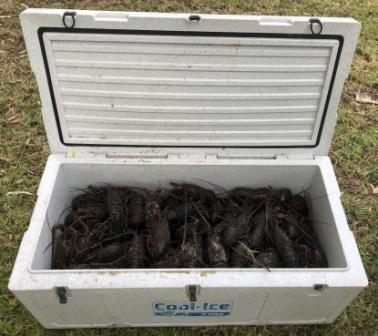
“The possession limit for Eastern Rock Lobsters in NSW is two per person, so these two males had more than 40 times the limit for an individual,” he said.
“A total of 48 of these lobsters were found to be undersized, measuring between 6.9cm and 10.1cm carapace length. The minimum size for Eastern Rock Lobsters is 10.4cm carapace length.
“It is alleged when DPI Fisheries Officers inspected the vehicle, it was quickly apparent that the men were in possession of a commercial quantity of the species. All 86 lobsters were able to be returned to the water.”
In NSW, it is illegal to sell any recreational caught fish including Eastern Rock Lobsters and is also illegal to buy or sell Eastern Rock Lobsters not legally caught by licensed commercial fishers with NSW DPI lobster tags attached.
Mr Chen said the NSW lobster fishery is a highly regulated, share managed quota fishery.
“It is a small but valuable industry with a gross value of around $11.5 million. Black marketing undermines the strict management arrangements that aim to maintain a sustainable and viable recreational fishery and commercial industry,” he said.
“Trafficking of Eastern Rock Lobsters in NSW is an indictable offence and carries a maximum gaol term of ten years imprisonment. It can also carry an additional financial penalty of up to 10 times the value of the fish. An indictable quantity of Eastern Rock Lobster is 20.
“DPI Fisheries Officers patrol our state every day and night, targeting illegal fishers who threaten the fisheries resource and jeopardise it for future generations to enjoy.”
Anyone with information on suspected illegal fishing activity is urged to contact their local DPI fisheries office, call the Fisher Watch phone line on 1800 043 536 or report illegal fishing activities online. For more information visit the DPI website.

Illegal Fishing Fails To Pay Off For Lobster Pinchers
July 18, 2018: NSW DPITwo men have been ordered to pay thousands of dollars in fines after being found guilty of illegally trafficking eastern rock lobsters in Newcastle earlier this year, NSW Department of Primary Industries (NSW DPI) Acting Director Fisheries Compliance, Tony Chen, said today.
Mr Chen said NSW DPI Fisheries Officers from the Hunter District and the Statewide Operations and Investigations Group had the two men, a 56 year-old man from Harrington, and a 25 year-old man from Harrington, under surveillance for some time during ‘Operation Antennae’ before apprehending the men on February 23.
“The 25 year-old man was apprehended in the car park of a fast food restaurant in Wickham after being followed by fisheries officers from the 56 year-old man’s trawler in Newcastle Harbour. The 25 year-old man was found to be in possession of 40 eastern rock lobsters, two of them being oversized,” Mr Chen said.
“The lobsters were seized as well as the vehicle that they were being transported in, a 2013 Ford Ranger valued at $15,000.
“NSW DPI believed the lobsters, worth around $3800 on the market, were taken illegally by use of an otter trawl (prawn) net from the 56 year-old man’s offshore prawn trawler.
“The men were charged with a range of offences including trafficking lobsters, aggravated possession of lobsters, take eastern rock lobsters for sale when not the holder of an duly endorsed commercial fishing licence, and attempt to sell lobster without a tag attached.”
The men were found guilty at Newcastle Local Court earlier this month, with the 56 year-old man issued with $14,000 in penalties, ordered to pay an additional penalty of $22,000 relating to the market value of the catch, as well as placed on a 2 year good behaviour bond while his vehicle was forfeited to the Crown. The 25 year-old man was placed on a 12 month good behaviour bond plus issued with $6000 in penalties.
Minister for Primary Industries Niall Blair said the court outcome is a fantastic result.
“This is a big win for our hard working fisheries officers, who day in and day out do all they can to put a stop to illegal fishing,” Mr Blair said.
“The court results reflect the seriousness of the offences and the importance of protecting the small but valuable share managed lobster fishery.
“Rules are in place with a strict total allowable commercial catch quota system accessible only by fishers endorsed in the fishery. Individual lobsters must be tagged with numbered tags provided by DPI if legally taken for sale.
“NSW DPI fisheries officers work tirelessly every day to unveil illegal fishing which threatens legitimate markets and economic development and the hard work of all honest fishers.”
Anyone with information on suspected illegal fishing activity is urged to contact their local DPI fisheries office, call the Fisher Watch phone line on 1800 043 536 or report illegal fishing activities online. For more information visit the DPI website.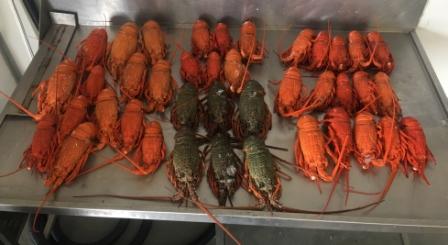
Eastern Rock Lobsters seized

Dept. Of P &E Taking Submissions On:
Integra Mine Complex
Exhibition Start 12/07/2018Exhibition End 26/07/2018
Dartbrook Coal MineThe proposed modification includes undertaking mining of the Kayuga Seam using the first workings bord and pillar method as an alternative to approved longwall mining. In addition to the approved operations, ROM coal will be hauled using road registered trucks on existing private roads to a new shaft facility located between the existing private Western Access Road and the New England Highway. The new, enclosed shaft will be used to deliver coal via the existing Hunter Tunnel under the New England Highway to an existing stockpile. Crushed, unbeneficiated raw coal will be delivered to the train loadout facility.
The proposal also includes extending the consent period by 5 years to 5 December 2027.
Exhibition Start 28/06/2018Exhibition End 25/07/2018
Have Your Say On Safeguarding Pasminco's Future
19.07.2018: Media Release - Department of Planning and EnvironmentThe Department of Planning and Environment is inviting the community’s feedback on a proposed legislative change to establish a long-term management framework, including funding, for the Pasminco Cockle Creek Smelter site before any further significant development occurs.
The proposed amendment to State Environmental Planning Policy No 55 – Remediation of Land (SEPP 55) will require adequate arrangements for the long-term management, monitoring and maintenance of the containment cell, unremediated areas within the former Smelter site and other land within that site that is currently zoned E2 Environmental Conservation.
Lake Macquarie residents and businesses are now invited to have their say on the proposed SEPP amendment during the public exhibition period from 17 – 31 July 2018.
The Department of Planning & Environment’s Executive Director Key Sites & Industry Assessments, Anthea Sargeant, said the SEPP 55 amendment proposal represents an important step in the long-term remediation efforts at the Boolaroo site.
“The Department is working closely with Lake Macquarie City Council and the NSW Environment Protection Authority to ensure the necessary arrangements associated with the perpetual care of the containment cell, including financial arrangements, are accounted for prior to the issue of any further development approvals at the Boolaroo site,” Ms Sargeant said.
Large sections of the site earmarked for future redevelopment have been remediated following project approval by the then Minister for Planning in 2007.
The on-site containment cell contains approximately 1.9 million cubic metres of hazardous and other contaminated material and will require ongoing management as part of an environmental management framework.
Have your say at the Department's online submission portal.
Pasminco Cockle Creek Smelter siteYou are invited to have your say on a proposed legislative change to ensure a long-term management framework, including financial arrangements, are in place before any further significant development occurs on the site of the former Pasminco Cockle Creek Smelter and Incitec fertiliser factory at Boolaroo in Lake Macquarie. The proposed amendments will impact:- State Environmental Planning Policy No 55 – Remediation of Land
- State Environmental Planning Policy (Exempt and Complying Development Codes) 2008
The proposal will assist in ensuring that adequate arrangements are in place for the perpetual care of the containment cell, un-remediated land and land currently zoned E2 (Environmental Conservation) within the site of the former Cockle Creek smelter and Incitec fertiliser factory, before further significant residential or commercial development on the site occurs. Click on the link below to read the Explanation of Intended Effect (EIE) and make a submission.
- State Environmental Planning Policy No 55 – Remediation of Land
- State Environmental Planning Policy (Exempt and Complying Development Codes) 2008
Cockle Creek Smelter
Cockle Creek Smelter was a zinc and lead smelter located at the northern end of Lake Macquarie near Boolaroo in Newcastle, New South Wales. The smelter was built in by the Sulphide Corporation in 1896 and the first attempts to refine zinc using the Ashcroft Process began in 1897 but that process was abandoned shortly after due to technical difficulties.
The plant was subsequently adapted to smelt Lead using blast furnace technology. The smelter produced large quantities of Zinc, Lead and sulphuric acid during its life. The Cockle Creek Smelter was one of the Hunter regions first major industrial site and its operation contributed to the economic growth of New South Wales and Australia.
Other materials were produced at the smelter to fill the need as required such as Cement, Superphosphate and compounds for explosive manufacture for the war effort in World War I and World War II.
A rail connection was made from the plant to the Newcastle line on 16 July 1896.[1] The smelter closed in September 2003, since it had become uneconomic.
Environmental issuesThe operation of the Pasminco smelter for over a century resulted in soil contamination of surrounding areas such as Boolaroo, Argenton and Speers Point by lead and other heavy metals.[2] During the last decades of its operation local opposition to the pollution produced by its activities began to develop but was stymied by skillful public relations which emphasized the economic benefits which accrued to the local community.[3] Following cessation of its operations due to insolvency and appointment of the insolvency practitioner Ferrier Hodgson as voluntary administrator in September 2001 under the Corporations Act 2001[4] there was environmental remediation of the site of smelter and nearby properties with some buyouts and teardowns; aid in removing 5 centimeters of contaminated soil was extended to 18 adjoining landowners with contamination of 2,500 parts per million or more of lead.[5] This partial cleanup was signed off on by the then Labor state government which in 2008 released Pasminco from a 1995 requirement that adjoining properties with lead levels above 600 parts per million be remediated, substituting a much less stringent "lead abatement strategy"[5] (There is no mechanism in Australia analogous to the Superfund mechanism in the United States).[6] Much of the soil in the surrounding area remains hazardous waste, however, and could not be deposited in a local tip. Pasminco was restructured in 2002 by Ferrier Hodgson, its voluntary administrator, as Zinifex.[7] Zinifex was merged into OZ Minerals,[8] then purchased by the Chinese state-owned China Minmetals, which then, with Australian participation, formed Minerals and Metals Group. The successor in interest to Pasminco has apparently been able to avoid continuing legal liability by virtue of skillful legal structuring of the transaction transferring the interest.[3]
As of 2014 a total of $670 million remained in the hands of Ferrier Hodgson, Pasminco's administrator which, on the basis of completion of the cleanup, is slated to be paid to its creditors.
July 19, 2018: Government plans law change after Pasminco links lead pollution monitoring to IKEA sale - Lakes Mail
References- The Sulphide Works Railway Buckland, John L. Australian Railway Historical Society Bulletin April, 1950 pp118-119
- "The archive of the Newcastle Herald's Toxic Truth investigation" (Archive of links to a series of articles and videos). Newcastle Herald. December 13, 2014. Retrieved December 12, 2014.
- Donna Page; Matthew Kelly; Helen Gregory; Damon Cronshaw (December 8, 2014). "Toxic Truth: Prisoners of propaganda". Newcastle Herald. Retrieved December 12, 2014. really slick public relations job
- "Insolvency Management". ferrierhodgson.com. Ferrier Hodgson. Retrieved December 12, 2014.
- Damon Cronshaw (November 30, 2014). "Residents outraged remediation no longer legally required". Newcastle Herald. Retrieved December 12, 2014. The planning department agreed to ‘‘surrender’’ the condition and instead accept a ‘‘Lead Abatement Strategy’’ in 2008, government documents show
- Damon Cronshaw (December 11, 2014). "Toxic Truth: Pasminico remediation criticised: US best practice example". Newcastle Herald. Retrieved December 12, 2014. a failure to regulate and enforce world’s best practice
- Barry FitzGerald (May 22, 2002). "Plan to raise Pasminco from the grave". Sunday Morning Herald. Retrieved December 12, 2014. Under the restructuring plan, the creditors will first move to near 100 per cent ownership of Pasminco under a controversial debt-for-equity swap that will leave the company essentially debt free.
- Ian Kirkwood (November 30, 2014). "Pasminco's rocky road". Newcastle Herald. Retrieved December 14, 2014. Ferrier Hodgson told the Herald this month that remediation of the site was almost complete and that Pasminco’s creditors – the banks owed $2.6billion – would get 22¢ in the dollar, or about $670 million.
- The Sulphide Works Railway Buckland, John L. Australian Railway Historical Society Bulletin April, 1950 pp118-119
- "The archive of the Newcastle Herald's Toxic Truth investigation" (Archive of links to a series of articles and videos). Newcastle Herald. December 13, 2014. Retrieved December 12, 2014.
- Donna Page; Matthew Kelly; Helen Gregory; Damon Cronshaw (December 8, 2014). "Toxic Truth: Prisoners of propaganda". Newcastle Herald. Retrieved December 12, 2014. really slick public relations job
- "Insolvency Management". ferrierhodgson.com. Ferrier Hodgson. Retrieved December 12, 2014.
- Damon Cronshaw (November 30, 2014). "Residents outraged remediation no longer legally required". Newcastle Herald. Retrieved December 12, 2014. The planning department agreed to ‘‘surrender’’ the condition and instead accept a ‘‘Lead Abatement Strategy’’ in 2008, government documents show
- Damon Cronshaw (December 11, 2014). "Toxic Truth: Pasminico remediation criticised: US best practice example". Newcastle Herald. Retrieved December 12, 2014. a failure to regulate and enforce world’s best practice
- Barry FitzGerald (May 22, 2002). "Plan to raise Pasminco from the grave". Sunday Morning Herald. Retrieved December 12, 2014. Under the restructuring plan, the creditors will first move to near 100 per cent ownership of Pasminco under a controversial debt-for-equity swap that will leave the company essentially debt free.
- Ian Kirkwood (November 30, 2014). "Pasminco's rocky road". Newcastle Herald. Retrieved December 14, 2014. Ferrier Hodgson told the Herald this month that remediation of the site was almost complete and that Pasminco’s creditors – the banks owed $2.6billion – would get 22¢ in the dollar, or about $670 million.
NSW Government The First To Launch 'Build-To-Rent'
John B Fairfax Gives Young Rural Journalists A Voice
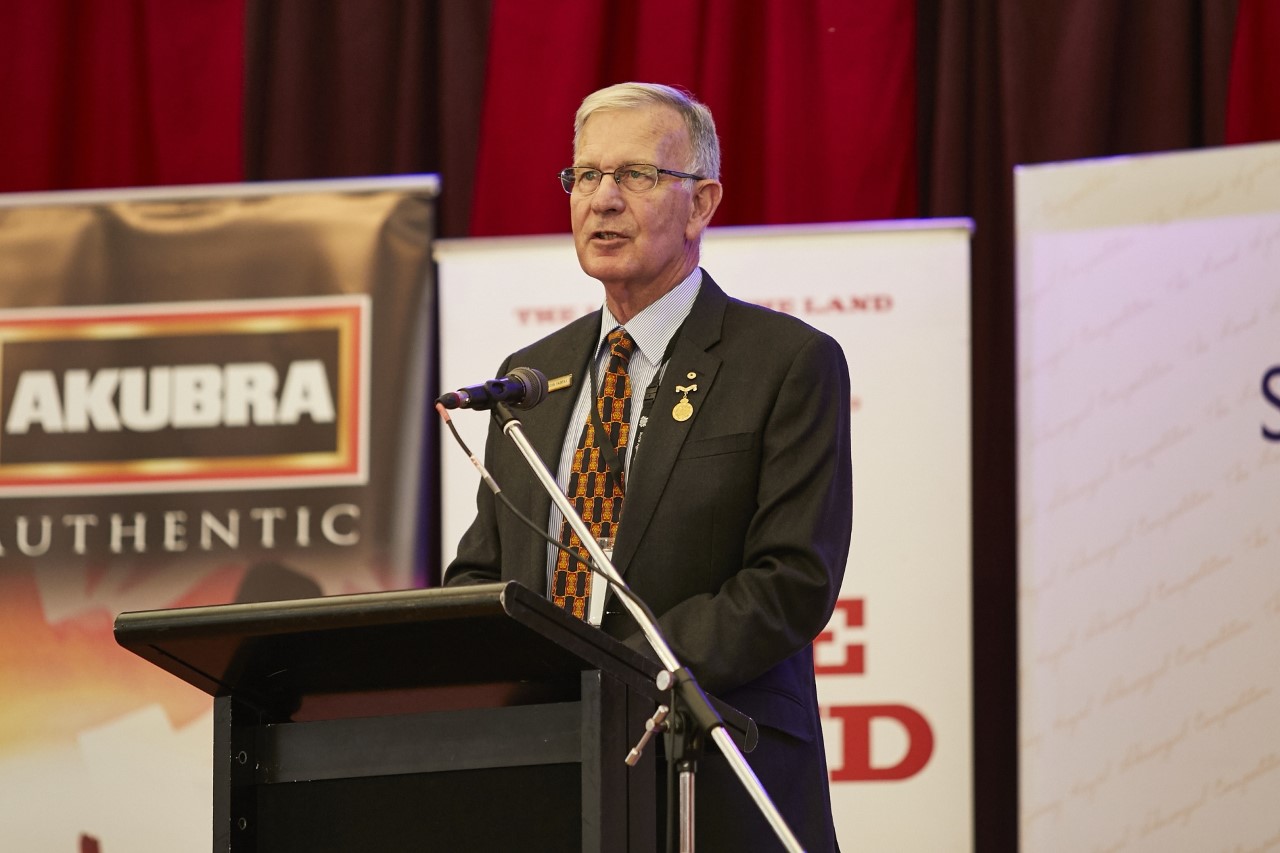
Breakthrough By Sydney Scientists Could Impact Cancer, Ageing And Heart Disease
Australia-Led Global Push To Tackle PCOS -- The Principal Cause Of Infertility In Women
$50 Million To Provide Life-Saving Support To Cancer Patients
Australia To Lead Lithium Battery Recycling Charge
- Only 2 per cent of Australia's annual 3300 tonnes of lithium-ion battery waste is recycled.
- This waste is growing by 20 per cent a year and could exceed 100,000 tonnes by 2036.
- If recycled, 95 per cent of components can be turned into new batteries or used in other industries.
- By comparison, of the 150,000 tonnes of lead-acid batteries sold in 2010, 98 per cent were recycled.
- The majority of Australia's battery waste is shipped overseas, and the waste that remains left in landfill, leading to a potential fires, environmental contamination, and risk to human health.
Disclaimer: These articles are not intended to provide medical advice, diagnosis or treatment. Views expressed here do not necessarily reflect those of Pittwater Online News or its staff.